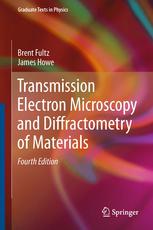

Most ebook files are in PDF format, so you can easily read them using various software such as Foxit Reader or directly on the Google Chrome browser.
Some ebook files are released by publishers in other formats such as .awz, .mobi, .epub, .fb2, etc. You may need to install specific software to read these formats on mobile/PC, such as Calibre.
Please read the tutorial at this link: https://ebookbell.com/faq
We offer FREE conversion to the popular formats you request; however, this may take some time. Therefore, right after payment, please email us, and we will try to provide the service as quickly as possible.
For some exceptional file formats or broken links (if any), please refrain from opening any disputes. Instead, email us first, and we will try to assist within a maximum of 6 hours.
EbookBell Team

4.0
16 reviewsThis book explains concepts of transmission electron microscopy (TEM) and x-ray diffractometry (XRD) that are important for the characterization of materials. The fourth edition adds important new techniques of TEM such as electron tomography, nanobeam diffraction, and geometric phase analysis. A new chapter on neutron scattering completes the trio of x-ray, electron and neutron diffraction. All chapters were updated and revised for clarity. The book explains the fundamentals of how waves and wavefunctions interact with atoms in solids, and the similarities and differences of using x-rays, electrons, or neutrons for diffraction measurements. Diffraction effects of crystalline order, defects, and disorder in materials are explained in detail. Both practical and theoretical issues are covered. The book can be used in an introductory-level or advanced-level course, since sections are identified by difficulty. Each chapter includes a set of problems to illustrate principles, and the extensive Appendix includes laboratory exercises.